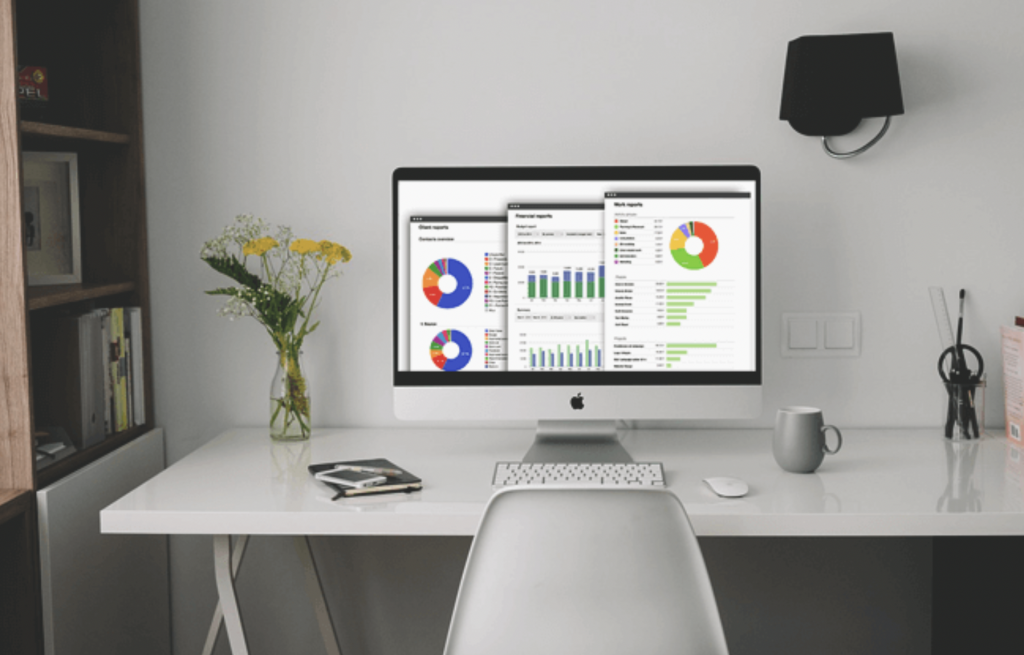There’s a famous quote from author Joy Gumz about project management that can be a source of inspiration. Gumz talks about how “operations keep the lights on” and “strategy provides light at the end of the tunnel.” Project management, though, “is the train engine that moves the organization forward.”
The realization of Gumz’s saying seems to be playing out in real time as project management itself changes. Organizations, project managers, and teams now deal with rapidly shifting work dynamics and tech tools and capabilities. Fortunately, project management software is providing the capabilities project managers need to keep the train on the tracks.
Many new developments in the project management software space are catering to the practice’s role and methodology changes. However, these developments are also simultaneously driving those shifts. This article discusses three of the most prominent and impactful advancements.
1. Robust Resources and Features
Project management software is no longer limited to spreadsheet and whiteboard tracking features. Today’s applications can handle everything from simple projects involving close-knit teams to complex undertakings with employees spread across time zones. Besides accommodating different scopes, project management software can be geared toward certain functions and disciplines.
For instance, a software development project management tool can be developer- or software engineer–centric. Features like bug tracking help software engineer teams identify and work on issues with applications they’re creating. These tracking capabilities allow developers to cross-reference similar problems that have occurred in the past.
Plus, all team members can see an issue’s details and documentation and can jump in with their expertise. Engineering teams can potentially solve bugs faster and have a central repository to refer back to. Managers and those tasked with a project’s next stage will instantly know why an application is being held up.
Some project management tools are also geared toward industries like construction or are designed for cross-functional use. Project management apps track data that benefits entire organizations, regardless of which industry or discipline a tool’s features align with. This includes time spent on individual tasks and projects as a whole, expenses and budget allocations, and internal resource availability.
2. Automation Via Artificial Intelligence
Artificial intelligence and automation capabilities are being integrated into more software applications and work processes. Project management apps are no exception, with managers and organizations becoming increasingly reliant on AI to handle repetitive tasks. Project managers also depend on AI to improve deliverable outcomes and make strategic decisions.
In a Project Management Institute study, 81% of surveyed professionals said their organizations are influenced by artificial intelligence. Adopting AI technologies is a high priority for 37% of respondents’ organizations. And the expectation among professionals is that more projects will use artificial intelligence.
In addition to AI’s automation of routine tasks, it has the ability to predict outcomes and perform estimates. Using historical and current data, technology can quickly assess whether a project will be completed on time and on budget. AI can reveal whether it makes sense for an organization to take on a particular project or pass.
For projects a company does embark on, artificial intelligence will show how to optimize resources. This can include identifying employees and contractors with the appropriate skill sets, in addition to non-human resources such as materials. Project managers and executive leadership also see risk analysis and performance data reports within the app. There’s no longer a need to gather and sync information from several department heads.
3. Accommodation for Remote and Gig Workers
The rise in remote and independent contract work is impacting both organizations and project management teams. Even before COVID-19, Gallup research revealed that 36% of U.S. workers participated in the gig economy, either as their main job or a side hustle. With the arrival of the pandemic, these numbers have only grown. Consequently, there’s an increased likelihood that a project team member will work for more than one organization.
A project team may only contain a few full-time employees from the company that’s spearheading the project. Freelancers and independent contractors aren’t subject to the same working conditions as full-time employees. They often work remotely or from different locations than a firm’s W-2 staff members. Independent contractors also have more flexibility in how and when they produce agreed-upon deliverables.
While it’s possible project managers will work with the same freelancers on multiple projects, contractors might also change between assignments. Managers may have partially remote teams of full-time employees on top of independent contractors. Disparities in time zones, physical working locations, and work hours make cloud-based solutions and communication features a must.
Project management software is becoming increasingly collaborative to accommodate the rise in remote teams. This and the interdependence between internal and external workers have shifted apps toward a software as a service model. Contractors and internal employees can log into the same application from anywhere with an internet connection. They have access to the same information and tools and have several ways to communicate with other team members.
Workers don’t have to wait to reach out with text messages, video calls, or emails. They can make notes within assigned tasks and upload mock-ups and other documents that represent milestones within a project’s timeline. Everyone invested in the project sees what’s going on within a centralized tool and is aware of the next steps they need to take. As a result, teams experience fewer instances of disorganized email chains and data silos.
Conclusion
Advancements in tech and the capabilities of project management software have changed the roles of managers and teams. The scale of applications’ features is no longer tipped toward small teams that work similar hours from the same location. Project management software is now built to handle specialized and cross-functional tasks, automate repetitive work, and accommodate remote teams.
Most importantly, these new developments are helping companies better assess their resources and decision-making processes. In short, they’re guiding improvements organizations can make to stay relevant and agile.




